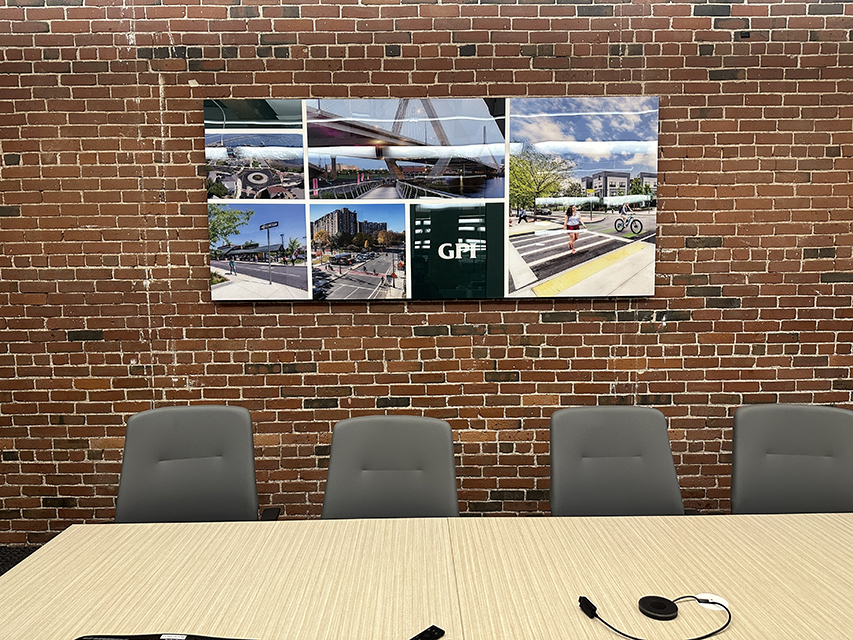
GPI/Greenman-Pederson, Inc., is a civil engineering firm consisting of over 1,700 professionals (engineers, planners, draftspersons, scientists, etc.) with offices all over the country. The organization was moving into a new office suite inside a multi-story building in Boston and wanted to incorporate their branding within the space in time for the opening.
The GPI manager at this Boston branch was in a jam. He had reached out to several shops in the area and encountered zero luck—either finding shop owners passing on this project or, even worse, receiving no reply back at all.
Enter Wayfinder Collaborative, LLC, an experiential signage consulting firm in East Providence, Rhode Island. They took on this project thanks to a referral from one of their other engineering clients. The company works primarily in the Rhode Island and Massachusetts area, and their collective of artisans and professionals are acutely adept at always putting their client’s experiences on display and simplifying the complexities behind custom and experiential signage.
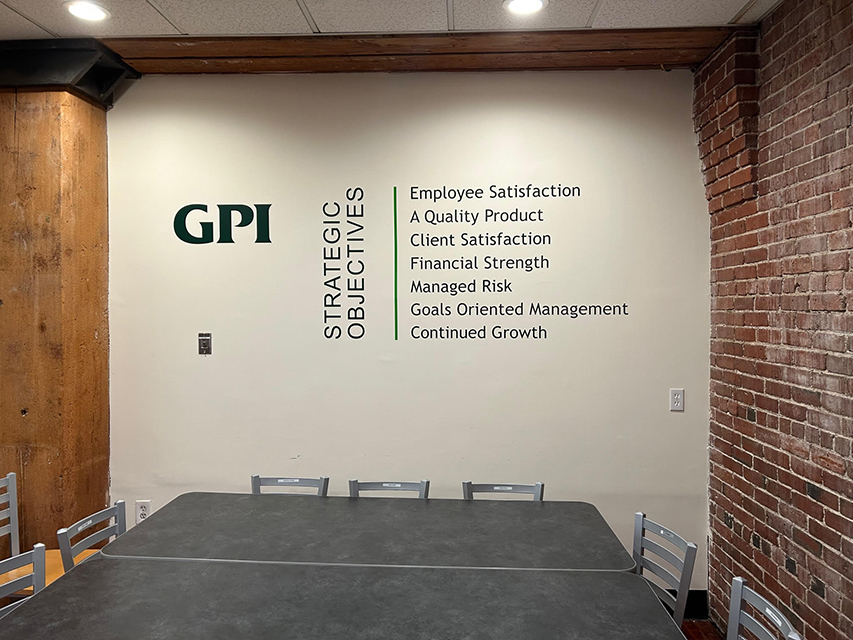
Their client knew what they wanted visually but no idea how to achieve it. Wayfinder Collaborative Founder William Galligan set up a first-person meeting with Zach Wassmouth, a manager at the Boston branch, to learn more about the project.
“It was my job to pull that information out then come up with the right solution that met the visual image he had in mind for what he wanted,” says Galligan. “The most important thing for me was listening and understanding what the client wanted to see and then coming up with the right solution to meet that need.
“The signage highlights the projects GPI has worked on and also the rich history of the neighborhood they call home.”
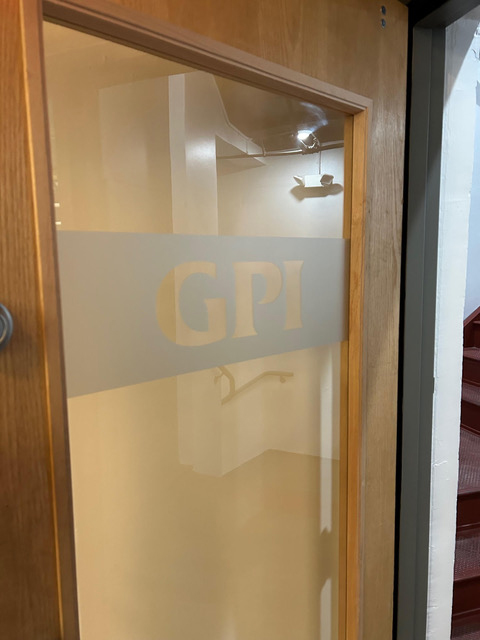
Concepts had already been developed before Wayfinder Collaborative became involved—a feature piece in one of the conference rooms that would highlight some GPI projects as well as historic images showcasing their new neighborhood in other spaces.
Using this information, Wayfinder Collaborative ended up creating and installing:
- The GPI logo presented on basic frosted ORACAL Fine Silver vinyl and applied to the entry door;
- Frosted vinyl graphics featuring a silhouette of the Boston city skyline on a large window looking into the break/café area;
- Vinyl graphics highlighting GPI’s strategic objectives applied onto a wall inside their break room;
- A 42-by-96-inch fabricated steel panel sign with finished paint hosting digitally printed magnetic pieces in their large conference room; and
- Acrylic panels, attached to walls with stand-offs, featuring their mission statements in a conference room and historic images in the hallways.
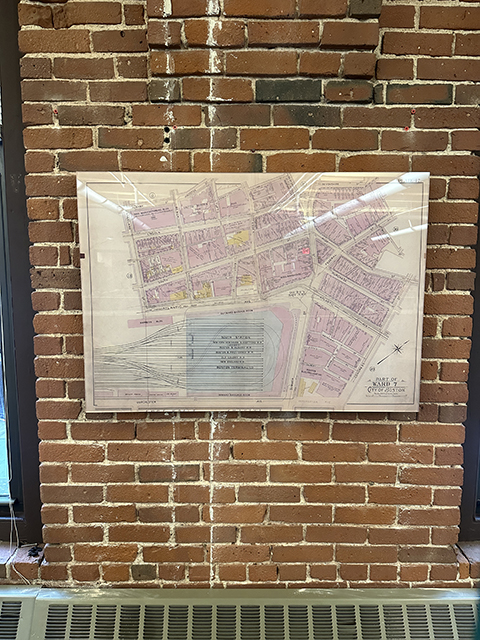
Wayfinder Collaborative looked on-site at the spaces their experiential signage could go in and helped GPI understand the best types of images that could be used, as well as where to find them (libraries, for example).
For the pieces with full photographic imagery (found through research), Galligan recommended GPI provide them full-scale 100-dpi at a minimum so the image quality wouldn’t decrease terribly if they needed enlarging. The other graphics and text were supplied as vector artwork.
The graphics were second-surface printed directly to the acrylic panels. “Since it’s sort of a gloss acrylic, it has a nice shine to it,” says Galligan. “We did the same with the mission statement panels.”
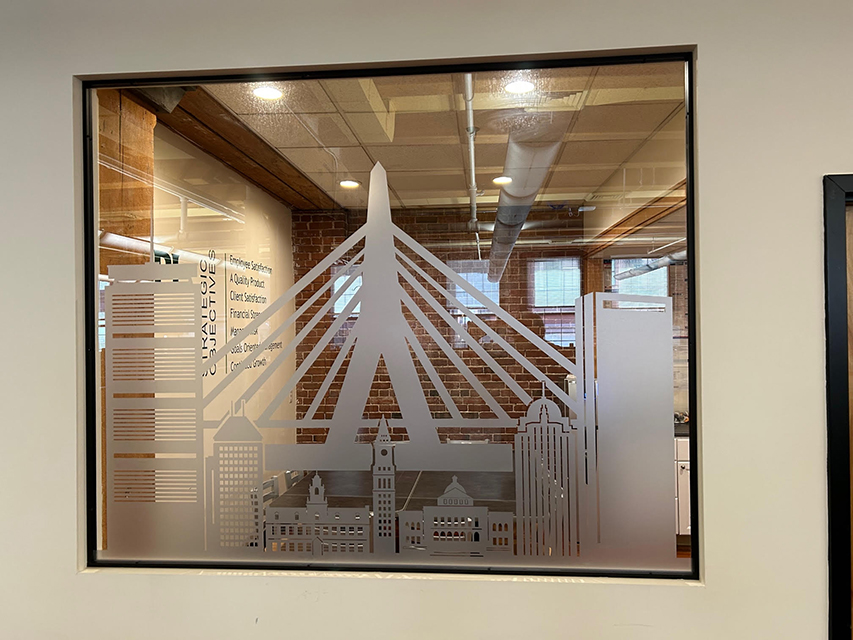
Per instructions from GPI, there are five changeable graphic images on the steel pan display in their large conference room that can be updated whenever needed. Those images were printed directly onto magnet material.
“The idea is that, if they want to showcase a different project that they’ve completed, they would have a photographer take the images of their project then send us those images. We would then directly print them onto the magnetic material to replace what’s there,” explains Galligan, noting this option also saves the client on labor costs as they can easily print these out then ship to them for installation.
Wayfinder Collaborative worked with GPI to develop a grid pattern to aid in laying out these magnet pieces for easy update in the future, when needed.
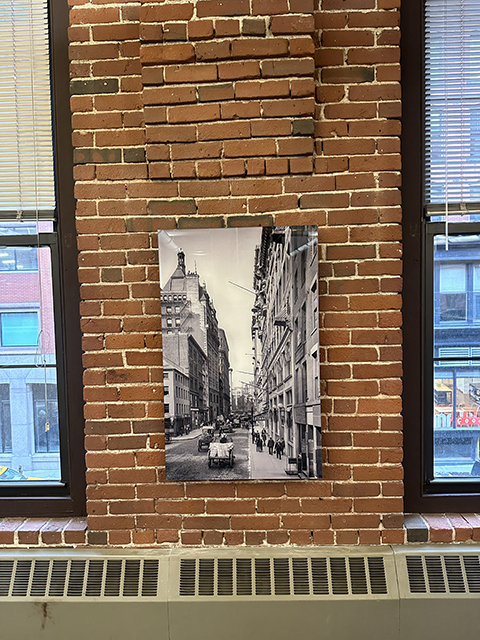
The hallway panels featuring the historic neighborhood images caused a bit of a challenge for Galligan and his team. The walls inside the office suite are an older brick, and the landlord required that anything attached to the walls had to be mounted into the mortar seams between the bricks. The bricks are also uneven, as the mortar seams had sunk back quite a bit from the brick facing.
“We designed a custom-angled mounting bracket system and strategically placed it on the back of the panels, which gave us flexibility where we could place them,” says Galligan, noting they drilled holes into the mortar seam.
All the signage and graphics were not installed at once. Some of the larger acrylic and fabricated steel elements fell behind due to a production delay. This caused Wayfinder Collaborative to pivot and focus on fulfilling other elements of this project instead. “We wanted to show them that we were committed,” says Galligan, “so we had the vinyl portions installed first, just so they would have something.”
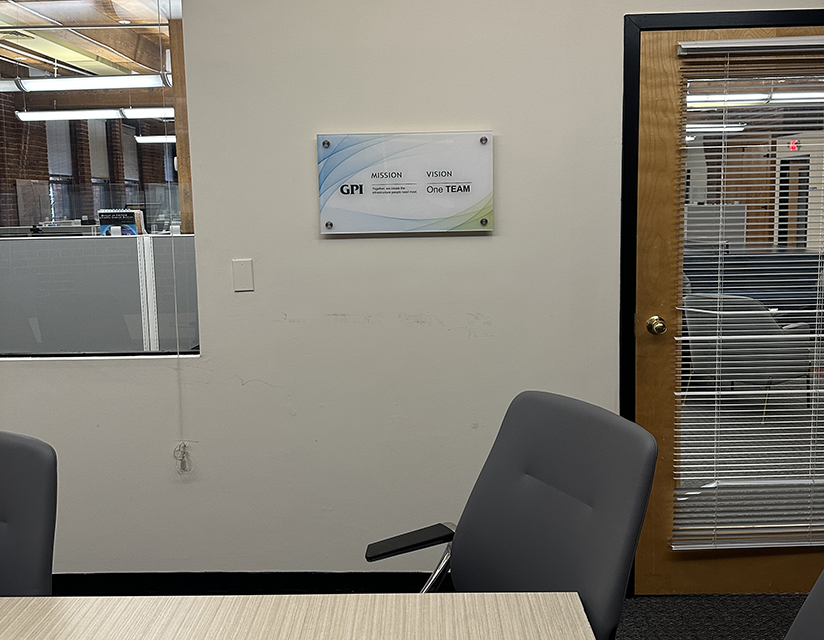
Conjecture is that a tight timeline is what caused some sign companies to pass—at the time, GPI wanted everything installed by the opening. “However, by the time we got involved, they weren’t worried about a deadline time anymore because they were already in this space,” says Galligan.
“We are really happy with the installations,” says Wassmouth. “Right from the start, [Galligan] came out to make a site visit and have a conversation to really understand what we were looking for. The Wayfinder team worked closely with us to develop options that were able to meet our requests and needs.”
Galligan expresses that it was great to have a client who also ended up being a good partner. “They needed help, so I knew that was the most important thing—to show we were there to help them,” he says.










